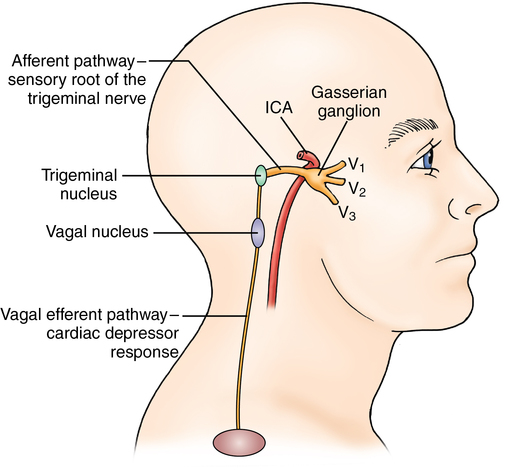Oculocardiac reflex
Anatomy
The afferent limb of the fifth cranial nerve is trigeminal, and the efferent limb is vagal. Specifically, afferent impulses travel via short and long ciliary nerves to the ciliary ganglion. From there, afferent information is sent to the gasserian ganglion via the ophthalmic branch of the trigeminal nerve (V1). Efferent impulses leave the brainstem by way of the vagus nerve (X) (Figure 38-1).





